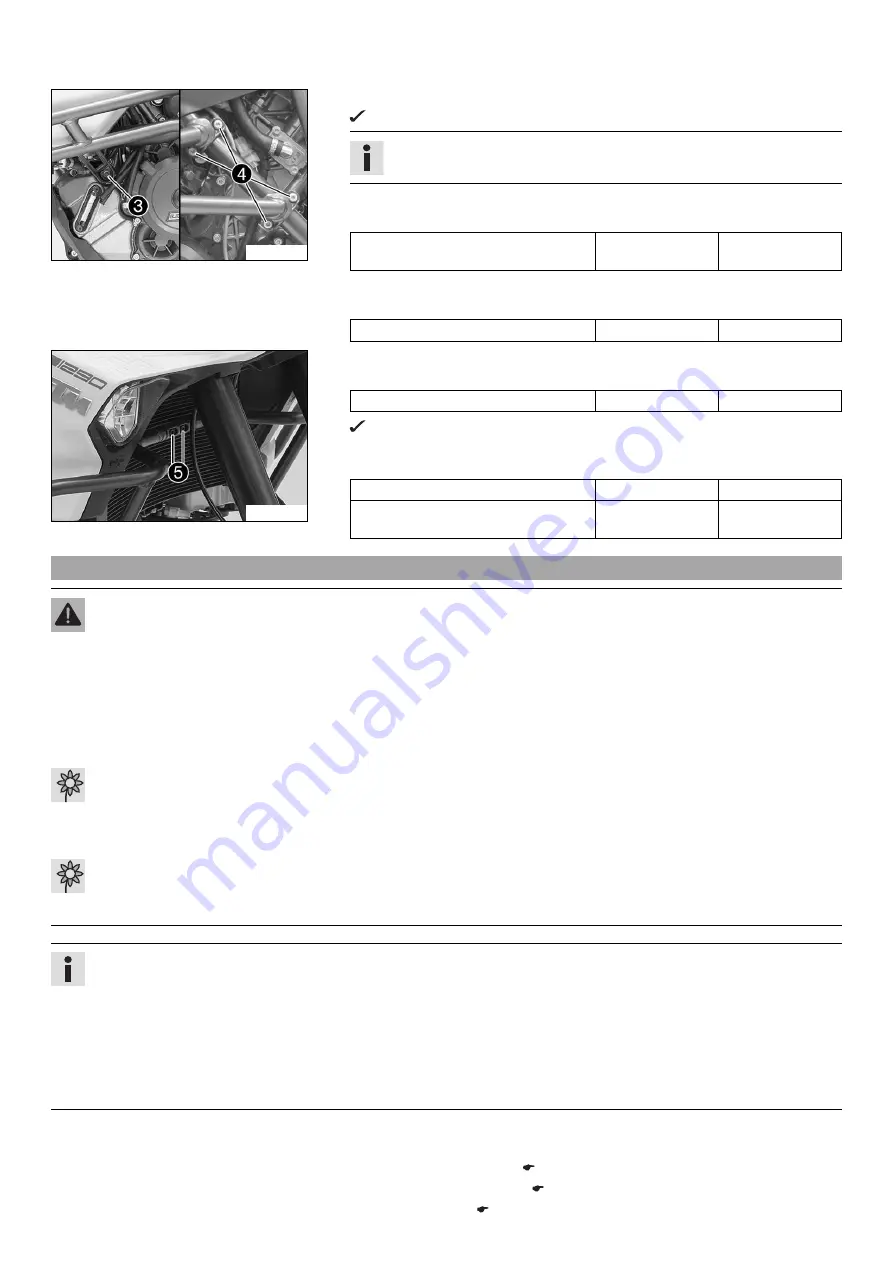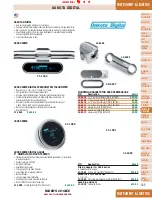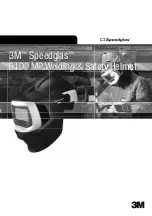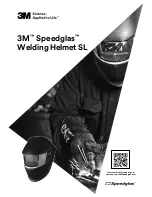
3
WORK
11
V00096-10
–
Position the left crash bar with the frame protector.
The fuel tank support ring should be correctly positioned on the fuel tank.
Info
Cover the components to protect them against damage.
–
Mount screw
, but do not tighten yet.
Guideline
Remaining chassis screws
M8
25 Nm
(18.4 lbf ft)
–
Mount screws
, but do not tighten yet.
Guideline
Remaining chassis screws
M6
10 Nm (7.4 lbf ft)
V00113-11
–
Mount and tighten fittings
.
Guideline
Remaining chassis screws
M6
10 Nm (7.4 lbf ft)
The crash bars are evenly aligned with each other.
–
Tighten all the screws of the crash bar.
Guideline
Remaining chassis screws
M6
10 Nm (7.4 lbf ft)
Remaining chassis screws
M8
25 Nm
(18.4 lbf ft)
3.12
Recharging the battery
Warning
Risk of injury
Battery acid and battery gases cause serious chemical burns.
–
Keep batteries out of the reach of children.
–
Wear suitable protective clothing and goggles.
–
Avoid contact with battery acid and battery gases.
–
Keep sparks and open flames away from the battery. Only charge in well-ventilated rooms.
–
In the event of skin contact, rinse with large amounts of water. If battery acid gets in the eyes, rinse with water for at least
15 minutes and contact a physician.
Warning
Environmental hazard
The battery contains elements that are harmful to the environment.
–
Do not dispose of batteries with the household waste. Dispose of a defective battery in an environmentally friendly manner.
Give the battery to your authorized KTM dealer or dispose of it at a collection point for used batteries.
Warning
Environmental hazard
Hazardous substances cause environmental damage.
–
Oil, grease, filters, fuel, cleaners, brake fluid, etc., should be disposed of as stipulated in applicable regulations.
Info
Even when there is no load on the battery, it discharges steadily.
The charging level and the method of charging are very important for the service life of the battery.
Rapid recharging with a high charging current shortens the service life of the battery.
If the charging current, charging voltage, and charging time are exceeded, the battery will be destroyed.
If the battery is depleted from starting the vehicle repeatedly, the battery must be charged immediately.
If the battery is left in a discharged state for an extended period, it will become over-discharged and sulfated, destroying the
battery.
The battery is maintenance-free, i.e., the acid level does not have to be checked.
Preparatory work
–
Switch off all power consumers and switch off the engine.
–
Remove the passenger seat. (
–
Remove the front rider's seat. (
–
Remove the battery. (











































